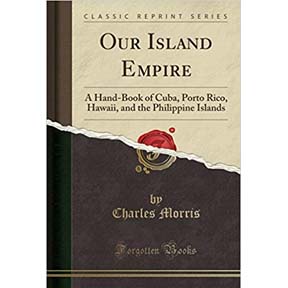People seldom pay attention to demography, even less appreciate its importance and social implication.
From a newly acquired rare book, Our Island Empire by Charles Morris (1899), we came to know that in 1855, “among 525 Chinamen in the fortress of Manila (apparently, Intramuros—Ed), there were only two women and the 5,055 Chinamen in Binondo included only eight females, all children.”
Morris pointed out, “It is to this state of affairs that the large mestizo population is due.”
The population of the Philippines then was “usually roughly estimated” at eight million, about five million of them in Luzon. The Chinese mestizos numbered more than 200,000.
Manila’s “estimated 300,000 inhabitants… include 50,000 Chinese and 4,000 Spanish half-breeds. Its remaining population is estimated to embrace 200,000 natives, 40,000 Chinese, 5,000 Spanish and creoles of Spanish descent, and about 300 whites of other than Spanish origins. The whole European population of the Philippines is estimated at 25,000 principally Spanish, the remainder being mainly English and German merchants.”
Such was the demographic situation in the Philippines by the second half of the 19th century.
There was an extreme gender imbalance among the Chinese immigrants then in Manila and the Philippines. This naturally resulted in the massive intermarriages between Chinese men and Filipino women; thus, the great number of Chinese mestizos.
Had there been a sizable number of female Chinese immigrants or greater gender balance in the Chinese community then, there would not be that many Chinese mestizos in the Philippines – “numerous enough,” Morris said, “to form separate and very influential communities.”
Morris observed that the Chinese mestizos had “more lasting” characteristic qualities, which he traced to the “close affinity of the two races” – Chinese and Filipino.
“These half-breeds, known as mestizo Chinos, possess a higher degree of intelligence than the natives and have much of the business shrewdness of their paternal stock. Many of the prominent merchants of Manila are of this descent. …Many of them took part with the rebels during the recent insurrection.”
Our Island Empire was, in fact, a handbook that provided Americans a general but concise and useful introduction to not only the Philippines but also Cuba, Puerto Rico and Hawaii. “The Philippine Islands” is Section IV on pp. 323-472.
Morris is also the author of The Nation’s Navy, The War with Spain and Historical Tales.
Categories
Chinese women were scarce
